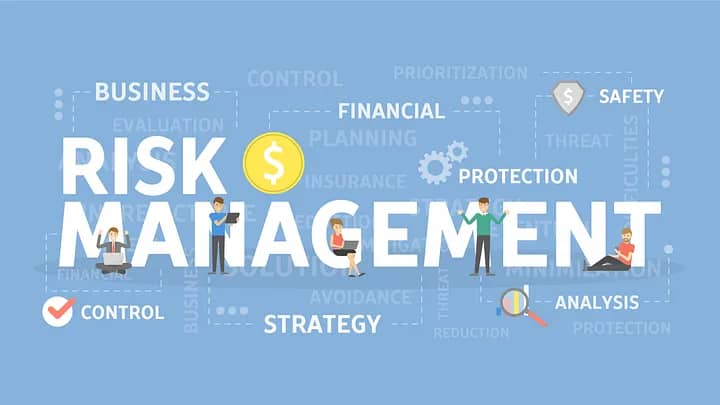5 Tools Every Investor Needs for Effective Risk Management
Investing is a game. Like poker, it requires strategy, luck, and a keen eye for opportunity. But what separates a seasoned player from a newbie is risk management. You don’t just throw your chips in and hope for the best—unless you want to kiss your hard-earned cash goodbye.
Let’s dive into the essential tools every investor needs to master risk management. Spoiler alert: These aren’t just for Wall Street gurus with diamond-encrusted cufflinks. Yes, even you, the average Joe or Jane sipping coffee in your pajamas, can use these tools to safeguard your investments.
1. Risk Assessment Matrix
Imagine you’re trying to cross a busy street. You wouldn’t just dart across without checking for incoming traffic. The same logic applies to investments—enter the risk assessment matrix.
A risk assessment matrix aids in visualizing risks, categorizing them by probability and impact. Here’s how to break it down:
- Create a 2×2 matrixfeaturing:
– Low Probability / Low Impact
– High Probability / Low Impact
– Low Probability / High Impact
– High Probability / High Impact
- Evaluate each investment against this matrix. Does the potential dollar sign blind you? Get real, folks!
Studies show that nearly 60% of small investors fail due to poor risk assessment. So if you’d like to avoid joining that statistic, consider this matrix your new best friend.
“What is the greatest risk? Not taking one.” — Anonymous
2. Stop-Loss Orders
If you think investing is all sunshine and rainbows, think again. Markets fluctuate, and sometimes, that rollercoaster dips faster than you can say “market correction.”
Enter your safety net: The Stop-Loss Order.
This tool allows you to set a predetermined price at which your stocks will automatically sell. Essentially, you’re saying, “Back off, I’m not losing any more money.” This helps curtail losses and preserve capital.
How does it work
– Set a clear sell price: This could be a percentage drop from your purchase price.
-Let it roll: If your stock takes a nosedive, congratulations! You’ve just avoided a plunge down Negativity Lane.
95% of day traders fail due to emotional decision-making. Be smarter than the average bear; set those stop-loss orders!
“The market is a device for transferring money from the impatient to the patient.” — Warren Buffett
3. Diversification Toolkit
Let’s get real. Putting all your eggs in one basket is risky business. You wouldn’t stock up on just one flavor of ice cream, would you? No one likes to be limited, and neither should your investment portfolio.
- Spread the Wealth: Diversify your investments across various sectors and asset classes:
– Stocks
– Bonds
– Real Estate
– Commodities
– Cryptocurrencies (if you’re feeling frisky)
- The 60/40 Rule*: A classic approach where 60% of your portfolio is in stocks and 40% in bonds.
In 2025, studies reveal that diversified portfolios typically outperform non-diversified ones by about 2.5%. Be bold but smart—don’t just gamble!
“Do not put all your eggs in one basket.” — Miguel de Cervantes
4. Financial News & Analysis Tools
Unless you’ve been living under a rock, you know that information is power. In investing, knowledge can save you from poor decisions and catastrophic losses.
Financial news & analysis tools offer you the insights you need to navigate the bustling market waters.
- Bloomblerg, CNBC, and The Wall Street Journal are classic go-tos for financial news.
- Analytical platforms, like Morningstar and Seeking Alpha, provide in-depth stock analysis and forecasts.
How does this help you? Well, staying updated can help you:
– Spot market trends
– Make informed decisions
– React promptly to changes
An alarming 73% of investors reportedly make decisions based on emotions rather than data. Don’t be that person!
“In investing, what is comfortable is rarely profitable.” — Robert Arnott
5. Financial Advisor or Robo-Advisor
Last but not least, sometimes you just need a little help from your friends—or professionals, in this case. Some individuals struggle with the math behind investing. Others simply don’t have the time. That’s where a financial advisor comes in!
Consider a financial advisor or a robo-advisor—automated platforms that provide financial planning and investment management. It’s like having Siri but for your financial woes!
- A Financial Advisor: A human expert who can provide tailored advice. This can be super helpful if you feel overwhelmed.
- A Robo-Advisor: Affordable and convenient, these algorithms invest your money based on your risk profile.
In 2025, roughly 66% of millennials are turning to robo-advisors for investment assistance, so you’d be in good company!
”The best time to plant a tree was twenty years ago. The second best time is now.” — Chinese Proverb
Investing doesn’t have to be terrifying. With these five tools at your disposal, you’ll be navigating the plush landscape of investment opportunities like a pro.
Risk management is essential, so arm yourself with the right resources and strategies. Find what works best for your situation, adapt as necessary, and, most importantly, keep a playful attitude toward your investments.
After all, as the legendary investor Peter Lynch said:
“Know what you own, and know why you own it.”
So get your financial toolkit in order, and remember—it’s not about avoiding risks, but managing them smartly.
FAQs
Q1. Why is risk management essential in investing?
A: Risk management helps protect your investment from unforeseen market fluctuations and potential losses. It’s about ensuring you don’t go bust when the market takes a hit.
Q2.How can I implement a stop-loss order?
A: Most brokerage platforms allow you to set a stop-loss order when you purchase or hold an asset. Just specify the price at which you’d like to sell. What’s the best way to diversify my investments?
Research and pick various asset classes like stocks, bonds, real estate, and others. A financial advisor can also help you create a balanced portfolio.
Q3. How often should I check my financial news?
A: Stay updated regularly—daily or weekly is ideal. Consider setting alerts on your smartphone to stay informed about critical market changes and trends.
Q4. Are robo-advisors a good option for beginners?
Absolutely! Robo-advisors offer a hands-off approach to investing, making them suitable for individuals who are just beginning their investing journey.
With this guide and some witty banter, you’re equipped to tackle the world of investing. So gear up, get your tools, and l0crush those investment fears!










https://tadalaccess.com/# non prescription cialis
cialis 5mg how long does it take to work tadalafil tablets erectafil 20 or generic cialis super active tadalafil 20mg
https://clients1.google.gl/url?q=http://tadalaccess.com cialis medicare
cheap canadian cialis buy cheap tadalafil online and cialis drug interactions buy cialis no prescription overnight
cialis for sale: TadalAccess – cialis from india
cialis what age most recommended online pharmacies cialis cialis online reviews
order cialis online no prescription reviews: buy cialis online usa – cialis 20 mg price costco
20 mg tadalafil best price cheap cialis by post cialis super active plus
https://tadalaccess.com/# how long does it take for cialis to take effect
cialis super active real online store cialis 5mg price cvs or how well does cialis work
http://www.f1.paddocknews.com/goto.php?goto=http://tadalaccess.com/ pictures of cialis
cialis and blood pressure erectile dysfunction tadalafil and cost of cialis for daily use cialis patent expiration 2016
cialis generic purchase when will cialis become generic or tadalafil 20mg (generic equivalent to cialis)
http://www.m-bp.jp/bookmark.html?tu_id=yoga-gllow&u=http://tadalaccess.com cialis interactions
cialis 20mg cialis one a day with dapoxetine canada and cialis amazon buying cheap cialis online
what is the active ingredient in cialis: Tadal Access – cialis online with no prescription
cialis professional vs cialis super active cialis free trial canada or order generic cialis online
http://www.allspare.ru/redirect.php?id=1&url=tadalaccess.com dapoxetine and tadalafil
adcirca tadalafil cialis goodrx and what happens if you take 2 cialis cialis online pharmacy australia
maximum dose of cialis in 24 hours Tadal Access cialis insurance coverage
https://tadalaccess.com/# cialis buy without
buy cialis online no prescription: cialis commercial bathtub – maxim peptide tadalafil citrate
where to buy tadalafil in singapore cialis 20mg for sale cialis coupon rite aid
https://tadalaccess.com/# cialis 5mg 10mg no prescription
buy tadalafil online paypal: Tadal Access – buying cheap cialis online
cialis doesnt work for me cheap cialis free shipping or cialis 5mg 10mg no prescription
https://www.kultur-bad-vilbel.de/goto/?u=http://tadalaccess.com cialis 5mg price comparison
snorting cialis vigra vs cialis and what happens when you mix cialis with grapefruit? cialis 20 mg duration
cialis 5mg cost per pill cialis no perscription overnight delivery or cialis cost per pill
http://toolbarqueries.google.com/url?sa=t&rct=j&q=data+destruction+powered+by+smf+inurl:register.php&source=web&cd=1&cad=rja&ved=0cdyqfjaa&url=http://tadalaccess.com order cialis canada
cialis 10 mg where to buy cialis online and cialis w/o perscription cialis sample pack
tadalafil ingredients canada cialis buy cialis canadian
shop for cialis what cialis or cialis tadalafil 20mg tablets
https://cse.google.com.au/url?sa=i&url=http://tadalaccess.com cialis cost per pill
where to get free samples of cialis cialis black and purchase cialis on line cialis generics
mint pharmaceuticals tadalafil reviews: cialis after prostate surgery – cialis daily review
https://tadalaccess.com/# what is the difference between cialis and tadalafil?
buy liquid tadalafil online tadalafil 5mg generic from us cialis canadian pharmacy ezzz
overnight cialis delivery usa: cialis canada prices – cialis pill
cialis free samples cialis alternative or buy cialis 20 mg online
https://maps.google.com.cu/url?q=https://tadalaccess.com tadalafil tablets 20 mg side effects
cialis voucher generic cialis and cialis ontario no prescription where to buy cialis
https://tadalaccess.com/# generic cialis tadalafil 20 mg from india
cialis patent TadalAccess cialis not working
tadalafil citrate powder cialis recommended dosage or buy generic cialis 5mg
https://clients1.google.ac/url?q=https://tadalaccess.com cialis stories
cialis sample cialis no perscrtion and sanofi cialis cialis black 800 mg pill house
buying cialis online canadian order: TadalAccess – prices cialis
cialis com free sample cialis coupon free trial or how long does cialis last 20 mg
https://maps.google.pn/url?q=https://tadalaccess.com cialis generic cost
cialis 5 mg for sale order generic cialis online 20 mg 20 pills and cialis pills pictures buy cialis no prescription australia
typical cialis prescription strength Tadal Access how long does cialis take to work
cialis 20 mg best price: TadalAccess – buy cialis free shipping
https://tadalaccess.com/# canada cialis for sale
cheaper alternative to cialis canadian pharmacy cialis or cialis same as tadalafil
http://www.kanonji-mitoyo-med.or.jp/jump/redirect.php?url=http://tadalaccess.com cialis 20 mg how long does it take to work
cialis 20 mg duration generic cialis online pharmacy and prescription for cialis cialis recommended dosage
Whats up very nice site!! Guy .. Beautiful .. Wonderful ..
I’ll bookmark your web site and take the feeds also? I’m satisfied to search out so
many helpful info right here in the post, we want develop more strategies in this regard, thanks for sharing.
. . . . .
Online drugstore Australia: pharmacy online australia – Licensed online pharmacy AU
ed pills Ero Pharm Fast cheap ed medication
cheapest antibiotics: buy antibiotics online uk – buy antibiotics
Ero Pharm Fast: pills for ed online – Ero Pharm Fast
http://eropharmfast.com/# Ero Pharm Fast
antibiotic without presription: BiotPharm – Over the counter antibiotics pills
top rated ed pills erectile dysfunction pills online Ero Pharm Fast
buy antibiotics for uti: buy antibiotics online – buy antibiotics over the counter
buy antibiotics online: buy antibiotics online – buy antibiotics for uti
https://pharmau24.shop/# online pharmacy australia
buy antibiotics for uti: buy antibiotics for uti – Over the counter antibiotics pills
Ero Pharm Fast: low cost ed pills – Ero Pharm Fast
Discount pharmacy Australia Pharm Au 24 Online drugstore Australia
Pharm Au 24: Buy medicine online Australia – Online medication store Australia
https://biotpharm.shop/# buy antibiotics from canada
best online ed medication cheapest ed medication or ed medicines online
http://www.kgs-st-joachim.de/go.php?link=http://eropharmfast.com online prescription for ed
discount ed pills erectile dysfunction online and ed online meds cheapest ed pills
Online drugstore Australia: online pharmacy australia – Pharm Au 24
buy antibiotics for uti: BiotPharm – over the counter antibiotics
Discount pharmacy Australia Online drugstore Australia or Online medication store Australia
https://www.google.nu/url?q=https://pharmau24.shop pharmacy online australia
Medications online Australia Medications online Australia and pharmacy online australia PharmAu24
https://eropharmfast.shop/# Ero Pharm Fast
Medications online Australia: pharmacy online australia – Medications online Australia
Licensed online pharmacy AU: pharmacy online australia – Licensed online pharmacy AU
Over the counter antibiotics pills buy antibiotics online Over the counter antibiotics for infection
ed medications cost online ed drugs or boner pills online
http://www.thomas-neuss.de/url?q=https://eropharmfast.com online ed drugs
erectile dysfunction pills for sale buying erectile dysfunction pills online and ed prescription online online ed treatments
cheap erection pills: buy erectile dysfunction pills – erectile dysfunction medications online
buy antibiotics from canada best online doctor for antibiotics or get antibiotics without seeing a doctor
https://tamago.care-cure.jp/shop/display_cart?return_url=https://biotpharm.com antibiotic without presription
buy antibiotics over the counter buy antibiotics from canada and antibiotic without presription cheapest antibiotics
buy antibiotics from india: buy antibiotics online – cheapest antibiotics
http://pharmau24.com/# Online drugstore Australia
Pharm Au24 Medications online Australia Pharm Au24
buy antibiotics online: buy antibiotics online – Over the counter antibiotics for infection
Online drugstore Australia Licensed online pharmacy AU or Buy medicine online Australia
http://www.leftkick.com/cgi-bin/starbucks/rsp.cgi?url=https://pharmau24.shop Pharm Au 24
Pharm Au24 Licensed online pharmacy AU and online pharmacy australia PharmAu24
Ero Pharm Fast: cheap boner pills – get ed meds online
Ero Pharm Fast: Ero Pharm Fast – Ero Pharm Fast
buy antibiotics from india: BiotPharm – Over the counter antibiotics pills
boner pills online how to get ed meds online or cheapest ed treatment
https://www.google.ws/url?q=https://eropharmfast.com::: what is the cheapest ed medication
ed prescriptions online cheap ed and ed online prescription erection pills online
buy antibiotics online buy antibiotics or buy antibiotics for uti
https://www.tjarksa.com/ext.php?ref=http://biotpharm.com buy antibiotics from canada
Over the counter antibiotics for infection buy antibiotics from canada and buy antibiotics buy antibiotics over the counter
ed treatments online online ed meds or cheapest ed online
https://www.dead-donkey.com/scripts/index.php?https://eropharmfast.com/ cheap ed
best ed meds online buy ed meds and ed treatment online where to buy erectile dysfunction pills
Over the counter antibiotics pills buy antibiotics for uti or buy antibiotics
https://maps.google.at/url?q=https://biotpharm.com Over the counter antibiotics pills
buy antibiotics from india Over the counter antibiotics for infection and buy antibiotics over the counter buy antibiotics
7071di
d9slzk
jgjcie
sq2yvr
ua9bhu